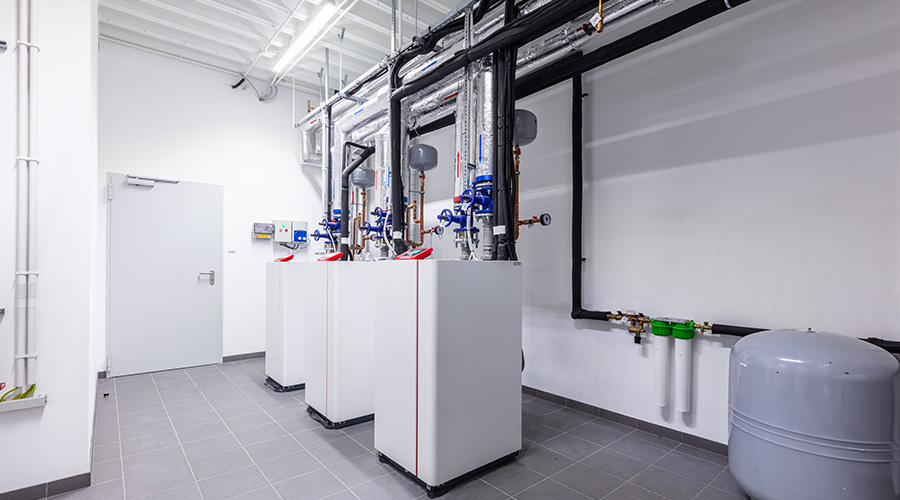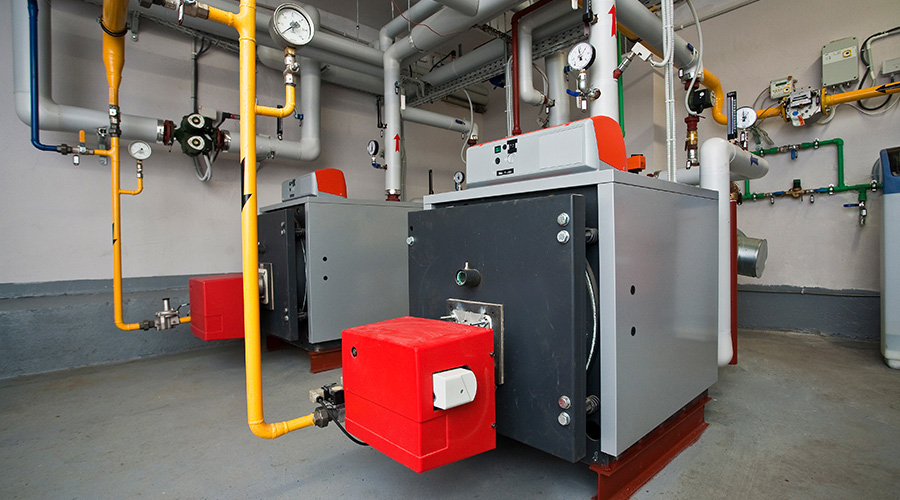The Search for Savings
Systematic inspections of HVAC components can generate bottom-line benefits
Improving the operating efficiency of a building’s HVAC system is one way to reduce energy costs. It is the driving force behind many HVAC retrofit programs, from boiler and chiller replacements to control-system upgrades. But costly programs for replacing equipment and systems are not the only routes to reduced energy use. Sometimes, all it takes is making certain that installed equipment operates properly and at peak efficiency.
Simply because a unit seems to be working and people are not complaining, that is no guarantee the unit is working correctly or efficiently. Facilities staff that have closely inspected the operation of their HVAC systems, tuned up components and adjusted systems to operate as intended can reduce HVAC system energy requirements significantly.
Why an Audit?
An HVAC audit is a component-by-component, system-by-system evaluation of all HVAC equipment. Whereas most maintenance activities focus on making things work, an HVAC audit focuses on making things work properly and efficiently.
When completed, an audit provides maintenance and engineering managers with a roadmap to greater energy efficiency. HVAC audits are not quick and dirty. They require extensive testing and measuring. In some cases, inspectors must open equipment such as chillers and boilers and inspect them for scale and deposits that reduce both operating efficiency and capacity. While many of the activities can be performed using in-house personnel, some specialized audit activities might require contracting for outside support.
Usual Suspects
An HVAC audit should start with the big energy users in a facility, such as chillers and boilers, the largest energy-using systems in any building. Any improvement in their operating efficiency, even if small, will produce significant savings in energy use.
Regarding chillers, inspectors should start with a review of the operating log. Are entries made on a regular basis? Does recorded data fall within the chiller’s normal operating range, or does it indicate that something is forcing the chiller to operate at less than optimal efficiency? What is the setting for the chilled water supply? Too high a temperature can result in humidity problems within the space, while if the temperature is too low, energy use will increase.
Next, the inspector should review the chiller’s maintenance records. When were chiller tubes last inspected and cleaned? In most applications, chiller tubes should be cleaned every two years to prevent the buildup of efficiency-robbing scale. The inspector also should check the run-time on the chiller's purge unit. High run-times indicate air leaks, a major cause of low operating efficiency.
The audit should not overlook the chiller's cooling tower, which tends to be roof-mounted and, therefore, out of sight and out of mind. The audit should include a check of the tower’s spray pattern, fill material, sump, overflow and drift eliminators. The inspector also should review the log of the water treatment program to ensure proper chemical application.
Boilers are the second-largest energy-using systems in most facilities. A review of boiler operating log data will help determine if a boiler is being properly operated, and a check of the maintenance log will help determine when the boiler was last cleaned or treated for scale and settlements.
Depending on a boiler’s capacity and use, annual inspections and cleaning might be in order. How effective is the boiler’s water treatment program? How closely are water conditions monitored, and how often are chemicals added? Is the boiler being operated at the proper temperature and pressure?
The Next Level
Once the audit has covered big-ticket items, the inspector can move on to smaller systems and components. A check of building air-handling systems will reveal whether they operate only when needed. Building occupancies change frequently, but unless technicians update air handlers’ operating schedules, those systems might end up operating several hours each day when the facility is not occupied.
An inspection of heating and cooling coils will reveal any buildup of dirt or corrosion. The inspector should check outside air dampers for smooth operation over their entire range. How much air is brought into the facility at the minimum outdoor air position?
If dampers stick open or if they are set too widely open, too much outdoor air will be introduced into the building, increasing both heating and cooling costs. Temperature-control systems should be checked for proper operation and calibration.
Managers should develop and implement an HVAC system audit that covers every piece of equipment in a facility. Pumps, fans, heat exchangers, water heaters, steam traps and refrigeration units all must be examined closely to determine if they are operating as intended and efficiently.
As with other systems and components, the inspector should start with maintenance records and operating schedules, then move to inspection and testing. Inspectors can fix minor deficiencies they identify during the audit, and they can identify items that require capital investment and offer recommendations for overhaul or replacement, complete with cost estimates.
Using the Audit Findings
When the HVAC audit has been completed, the inspector and manager will have a thorough understanding of the operating conditions of the HVAC systems supporting their operations. They will have identified and corrected those items that are easily and inexpensively corrected, they will have identified conditions that need overhaul or replacement, and they will have an estimate of their associated costs.
But the HVAC audit is not a process to be conducted once and forgotten. Building operations and the HVAC systems that support them are in a constant state of flux. Operations change. Heating and cooling loads change. Components wear out or go out of adjustment. Unless inspectors conduct audits regularly, building systems once again will slide into a state of inefficiency.
HVAC audits should be repeated every three to five years to ensure that building systems operate at peak efficiency. Conducting regular audits enables maintenance personnel to expand their day-to-day focus from complaints and breakdowns to include operating efficiency.
Audits still will be necessary, but then, energy efficiency will have become as important in everyone's daily routine as resolving complaints and fixing breakdowns.
James Piper is a Bowie, Md.-based consultant with more than 20 years of experience in facilities management, operations and maintenance.
Spotlight: ARI
The Air-Conditioning and Refrigeration Institute (ARI) is the trade association representing manufacturers of more than 90 percent of North American produced central air-conditioning and commercial refrigeration equipment.
Visit the ARI Web site to contact the association and to learn more about its meetings, activities and resources related to equipment standards, education, training and product information.
|
Related Topics:











